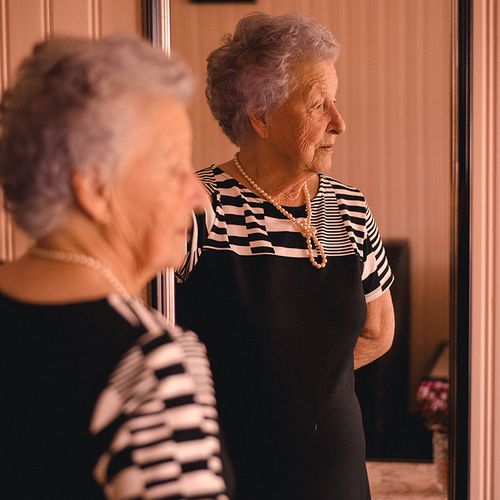Many physicians think of chronic obstructive pulmonary disease (COPD) as an old man's disease—but that is no longer true.
Facts: COPD is on the rise among women... its severity and symptoms tend to be worse for females...women with COPD seem to experience more anxiety and depression and a lower quality of life than men with the disease do... and more American women than men now die of COPD each year.
Some women who develop COPD may not even have known risk factors for it. What's going on, and how can women protect themselves?
What Is COPD?
COPD is a progressive lung disease that can cause serious, long-term disability. In severe cases, sufferers may become short of breath so easily that they cannot walk half a block. Patients with COPD have one or both of the following…
- Chronic bronchitis, which involves inflammation of the lining of the bronchial tubes (the two large tubes that carry air from the windpipe into the lungs). The inflammation narrows the airways, making it hard to breathe. Over time, the bronchial tubes become scarred and produce too much mucus, further blocking airflow.
Symptoms: Labored breathing, wheezing and a mucus-producing chronic cough.
- Emphysema, which involves damage to the lung's tiny air sacs (alveoli). As these sacs lose elasticity, it is increasingly difficult to draw in air and expel it from the lungs.
Symptoms: Shortness of breath, chronic cough, wheezing and a tendency to exhale through pursed lips to force out trapped air.
COPD is the fourth-leading cause of death in the US and is expected to be third by 2020. More than 12 million Americans have been diagnosed with COPD, and another 12 million may have it but not know it. Symptoms usually appear after age 40. More than one-third of COPD patients are under age 65.
The most common cause of COPD is smoking. Since the disease may take decades to develop, some of the increased incidence in women today is attributed to the rise of smoking among women starting in the 1950s. About 20% of smokers get COPD.
Even after a person quits smoking, his/her lungs may have some permanent damage—so a former smoker also remains at increased risk for COPD.
Long-term exposure to secondhand smoke also can contribute to COPD.
Troubling: From 5% to 12% of COPD patients are not smokers or ex-smokers-and the majority of these patients are women.
The Gender Bias
Theories on why COPD is hitting women harder…
- Since COPD is still thought of as a man's disease, women may not be correctly diagnosed in a timely fashion. COPD is commonly mistaken for asthma and treated with the wrong drugs. In general, primary care doctors refer a smaller percentage of female patients to the specialists most likely to order diagnostic tests to make the proper identification.
- Some evidence suggests that women smokers may be more likely to develop COPD than men smokers—perhaps women's lungs are more sensitive to toxins.
- Once addicted to cigarettes, women have a harder time quitting than men.
Among my patients, women tend to feel more keenly the stigma of using an oxygen tank in public. Embarrassment contributes to the anxiety and depression that often accompany COPD.
How To Protect Yourself
COPD tends to develop gradually, so you may not notice it for years—yet the longer treatment is delayed, the worse the condition gets. COPD cannot be cured but often can be controlled. The sooner you are diagnosed and treated, the better your outcome is likely to be.
What every woman should do…
- If you have any symptoms of COPD, see your doctor or a pulmonologist for a physical, chest X-ray and a spirometry testa noninvasive breathing test that measures how much and how fast you can blow air out of your lungs.
Referrals: American College of Chest Physicians, 800-343-2227, www.chestnet.org.
- If you smoke, stop now. Giving up cigarettes leads to even greater improvement in lung function for women than for men. Call 800-QUIT-NOW (784-8669), a free government service that provides trained "quit coaches"...or visit www.smokefree.gov for a how-to guide. If you're diagnosed with COPD...
- Investigate your health care options. These may include medication...supplemental oxygen therapy...surgery to remove damaged lung tissue and in very severe cases, a lung transplant. The American Lung Association offers a personalized on-line guide to the latest research (www.lungprofiler.nexcura.com).
- Use drugs properly. Bronchodilators relax airway muscles, and corticosteroids suppress inflammation. However, one-third of COPD sufferers do not correctly use a handheld device, called a dry powder inhaler, to administer medication. If your doctor prescribes an inhaler, get instructions on proper use of the device and follow them precisely.
- Get vaccinated against flu and pneumonia. These illnesses can be fatal for COPD patients.
- Ask your physician about pulmonary rehabilitation. It combines training in the use of breathing techniques, aerobic and strengthening exercises and nutrition counseling,
- Call your doctor without delay if you develop a fever...mucus that is green, yellow or tinged with blood...worsening of your cough... or increased difficulty breathing. These may be signs of an infection, pneumonia or other problem that should be treated immediately.
- Make sure your doctor monitors your overall health. COPD patients are at increased risk for cardiovascular disease, muscle problems, brittle bones (a side effect of steroid medication) and depression.
- Join a COPD support group. Contact the American Lung Association (800-586-4872, www.lungusa.org). Support groups do more than provide information. They also provide the emotional benefits of sharing with others who know what you are dealing with.
Holy Cow! Aging Increases Cavity Risk
Receding or damaged gums can expose the roots of teeth, which are susceptible to plaque buildup that causes decay.
Also: Old fillings may weaken, and the seals between them and teeth may be broken, causing cracks in which decay-causing bacteria can build up.
Self-defense: See your dentist regularly, and contact him/her anytime you experience increased tooth sensitivity, swollen or painful gums, or other changes in oral health.
